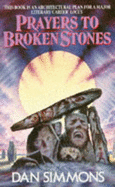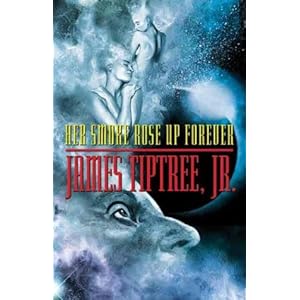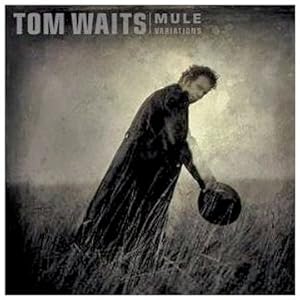Strange Story #7: The River Styx Runs Upstream
Author: Dan Simmons
Collected In: Prayers To Broken Stones
Her skin wasn't cold. It was just different.
 If mainstream horror stories are overrun by zombies, then 'weird fiction' is haunted by the far more ambiguous conception of 'the dead'. Although zombies rise from the grave, we know they aren't our loved ones returned. They are just ravening monsters in the same bodies. Know the rules of the fictional zombie universe and you can kill one with no moral qualms or regrets. Whereas, with 'the dead' there is some suggestion that what has returned is the person who died... but just altered. Strange.
If mainstream horror stories are overrun by zombies, then 'weird fiction' is haunted by the far more ambiguous conception of 'the dead'. Although zombies rise from the grave, we know they aren't our loved ones returned. They are just ravening monsters in the same bodies. Know the rules of the fictional zombie universe and you can kill one with no moral qualms or regrets. Whereas, with 'the dead' there is some suggestion that what has returned is the person who died... but just altered. Strange.Often such stories use the archetype of 'the ghosts', but an interesting sub-genre (or sub-sub-genre, maybe) comprises of those where the dead person has physically come back. Often they're back for revenge, but sometimes exactly why is unclear. Sometimes they have been brought back by the living rather than choosing to come back themselves... and sometimes it is uncertain exactly what has returned.
The first story I read to use this concept (and possibly the first 'strange story', as opposed to straight up horror, I ever read) is The River Styx Runs Upstream by Dan Simmons. Simmons's stories don't seem to feature in many anthologies or accounts of literate horror fiction for some some reason - maybe because he has written in so many genres; maybe because he seems to have largely given up the short story form (the natural home of weird fiction, I'd argue) for bloated novels; maybe because his more recent political views have by all accounts become a bit 'out there'. I haven't kept track of all of his books, partly for some of the reasons just mentioned, but he was on fire at the time of writing this story. It's taken from the fantastic collection Prayers To Broken Stones - Harlan Ellison's introduction is almost worth the cover price alone, especially for all you aspiring authors out there. This book made a big impression on me when I read it as a teenager; it's by far his best book in my opinion.
The River Styx Runs Upstream is the opening story, and it tells of a world where an obscure sect/business venture known as 'The Resurrectionists' can bring people back from the dead, as long as the family pays an ongoing tithe. In a brilliant touch, it is told from the point of view of a young boy who doesn't really understand the concept of death as yet. He is unable to distinguish the smiling, silent person who has come back home from his dead mother:
I saw that she never blinked... It didn't make me love her any less.
After death the boys returned mother comes back to 'live' with them; his father keeps repeating that people should think of it like someone recovering from an illness. She doesn't blink, or talk, or sweat; she waters the plants but still waters those that have died since she has. The father stops sleeping in the same bed as her and takes to drink; certain members of the family never return to the house. (There's hints throughout the story that certain sections of American society take a dim view of The Resurrectionists and those who use their services.)
There are other deaths the boy experiences as he grows up - the pretend deaths of he and his brother as they play at 'Cavalry and Indians', a dead squirrel found in the woods, a family dog that has to be put down (because it growls at the resurrected mother), even a kid from the local school who drowns. And there's a sense that the narrator's natural reactions to these events are being warped by the presence of his 'mother' in the family home. It is a natural and human part of growing up to learn about death, and that what you love will one day die. But how can he when he can still hold his mother's hand?
The consequences of not learning this, for the father, the brother, the narrator of the story (and perhaps for society as a whole) are made clear as the story progresses. In effect, it is as much heartbreaking as chilling - the strange story delivering an emotional wallop as well as ambiguity.
Next Week: Strange Stories #8. The Yellow Wallpaper by Charlotte Perkins Gilman










